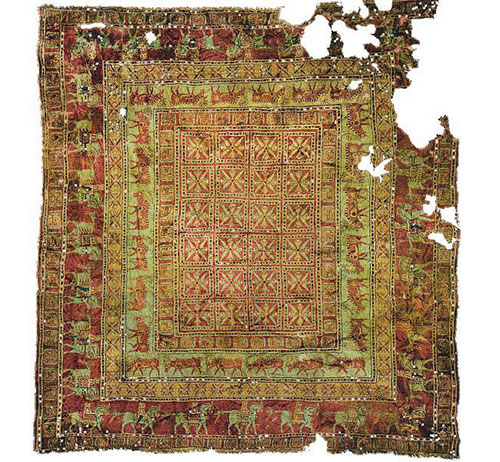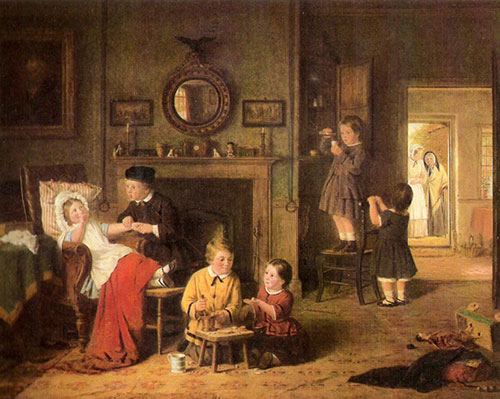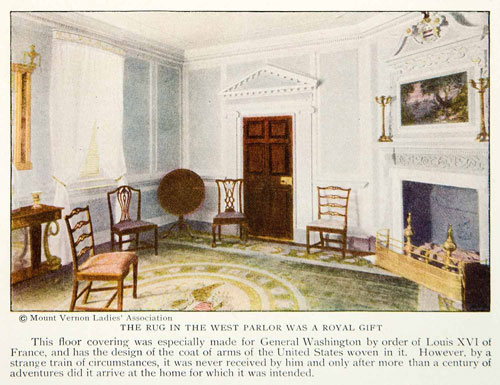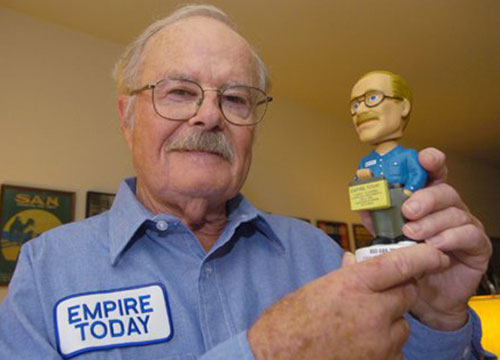Cutting A Rug
Carpets used to be important cultural artifacts. Now they extend from wall to wall, got shaggy, and are sold via earworm jingles. What a weird evolution.
Editor’s note: Lots of new subscribers this week! (Hi guys, hope you’re doing well.) If you haven’t had a chance yet, dig through the site, where you will find our diatribes about pleather, screws, and light beer—three things that shouldn’t be used together.
41.9%
The percentage of the U.S. flooring market represented by the carpet industry in 2015, according to statistics from Marketing Insights. The carpet industry, while significantly more popular than any kind of flooring, saw declines in 2015, falling in comparison to hardwood flooring (13.8 percent), ceramic (13.1 percent) and vinyl flooring (11.3 percent). Carpet remains the most popular kind of flooring, but it’s losing ground.

The Pazyryk Carpet. (via the Hermitage Museum)
A 10,000-foot view of carpet’s evolution from handmade artifact to synthetic apartment surface
Carpet has a long and storied history, with one of its earliest examples coming from Siberia.
The Pazyryk Carpet, which was excavated from a burial mound in 1947, was an incredible find at the time, as it was a nearly-2,500-year-old carpet that was largely intact, due to its being frozen in a block of ice. The details captured on the fabric, which is believed to be the world’s oldest pile carpet, are impressive—24 cross-shaped figures, 28 men on horseback, 24 deer. While the carpet’s colors have faded, the details can still be made out.
The carpet has found a home in the Hermitage Museum in Saint Petersburg, Russia. And there are said to have been examples that date back even further.
Clearly, carpet has come a long way from that early, fairly pristine example. As you hopefully learned from history class, parts of the world like China, Iran, North Africa, and Afghanistan each have distinctive styles of carpet that tell significant stories about the ancient cultures in each of those regions. (If you really want to dive in to the history behind these different styles, there’s actually a website titled CarpetEncyclopedia.com, which as it turns out, was a name we considered for this newsletter.)
Of course, the industrial revolution played an important role in the uptake of carpet globally. Improved manufacturing processes certainly helped—most notably, Erastus Bigelow’s invention of the power loom in 1839. (And it wasn’t even the most impressive thing Bigelow did! He also founded the Massachusetts Institute of Technology, which means that he’s indirectly responsible for the Bose Wave.)
But it wasn’t just improved manufacturing that played a role, though it helped us mass-manufacture Oriental rugs. Perhaps the most important innovation in the world of carpet came out of Dalton, Georgia, once known as the bedsheet capital of the world. A key invention that came out the bedsheet industry, says the Dalton-based Carpet and Rug Institute, was the invention of the mechanized tufting machine in the 1930s. It was a byproduct of minimum wage laws that were getting too high to make hand-built tufted bedsheets tenable.
It also had the side effect of making carpets made of tufted fabric into a natural next step for the industry.
“Machinery was developed for making chenille rugs and was widened, creating larger rugs and broadloom carpet,” the institute notes on its website. “At the same time, machinery was changing; developments of new fibers accelerated the growth of broadloom carpet.”
Eventually, Dalton’s primary industry, helped along by the eventual uptake of synthetic materials, transferred to the puffy carpet you’re surrounded by everywhere in your empty apartment.

Playing at Doctors, a Frederick Daniel Hardy painting featuring a drugget. (via J.R. Burrows & Company)
Five ways we’ve struggled to keep carpet clean over the years
- Druggets. Before it was possible to Stanley Steem carpet, it was very common to use heavy pieces of wool called druggets, which were designed to help protect the expensive rugs in areas of heavy use. They were also called “crumb cloths.” Essentially, you were covering the carpet with another carpet you didn’t really care about.
- Used tea leaves. After tea leaves were spent, it was common to take those leaves and sprinkle them on the floor, only to sweep them off after. In the 19th century, damp tea leaves were recommended for this purpose. The 1899 book The Expert Cleaner: A Handbook of Practical Information for All Who Like Clean Homes, Tidy Apparel, Wholesome Food, and Healthful Surroundings (what a title!) explains it like this: “If the carpet is of dark color or yellow tints, damp tea-leaves scattered over it before sweeping will improve the colors and give it a fresh, clean look.” Today, dry ones are recommended instead, and for a different purpose—reducing odor and bacteria.
- Beating. J.R. Burrows & Company has a lengthy list of historic carpet-cleaning techniques collected from vintage publications, and is very much worth a read. Perhaps the most interesting such technique highlighted involved literally beating the carpets—putting the rugs on a clothesline and taking a large paddle to the carpet to beat out the crumbs and dust. “There was a time when all work of this kind, done by hand, was preferred; but in the absence of men who do it thoroughly, and the lack of available space for such operations, the improved carpet-beating machines are heartily recommended,” stated the 1884 publication Carpet Notes. Vacuums couldn’t come soon enough.
- Uh, contraptions. The greatest carpet-related patent you’ll ever find was created by a guy named Warren P. Miller, who created what could be best described as an inverted vacuum. Essentially, the 1883 invention involved rolling up the carpet onto a machine that would then blow off the carpet. “It is the object of the present invention to provide an apparatus by which the dust and other loose impurities can be easily and effectually removed from carpets and other fabrics without the necessity of shaking, beating, or otherwise operating upon-them in a manner which is more or less damaging,” the filing, which looks hopelessly convoluted in comparison to modern solutions, stated.
- Carpet sweepers. The turning point in the complicated process of cleaning carpets came in 1876, when Michigan inventor Melville Bissell invented a mechanical sweeper with built in rotating brushes. This device could pick up many more particles than a broom could, and the general idea behind the carpet sweeper would be the basis for nearly every other popular carpet-cleaning product that came after. Well, minus Warren P. Miller.

One of the earliest gifts George Washington received as president was a wall-to-wall carpet from Louis XVI
Another major innovation in carpet that can be mostly credited to the industrial era is the wall-to-wall, or fitted, carpet.
But the carpet style had some precedent in Europe, where it had seen uptake in the 18th century. Reflecting that point, Louis XVI gave George Washington a fitted carpet for his home at Mount Vernon as a welcome-to-the-global-neighborhood gift of sorts. (With the U.S. seal woven into the rug, it wasn’t like the French leader intended it for anyone else.) Washington, concerned about accepting gifts, couldn’t accept it.
(I’m assuming that was a dodge, and that Washington was holding out for Louis XVI to get him shag carpeting.)
But in 1897, Sarah Yates Whelen, whose great-grandfather came into ownership of this rug as a result of this problem, gave it back to to the Mount Vernon Ladies’ Association for its original purpose, explaining its history in a letter:
This carpet was made by order of Louis XVI of France, for George Washington, President of the United States, and was sent over during the first years of his administration, when Philadelphia was the National Capital. As he was not allowed to receive present from foreign powers, the carpet was sold to my-great grandfather, Judge Jasper Yates, and remained in the old family mansion at Lancaster until about thirty years ago, when it came into my possession.
As I consider Mt. Vernon the proper place for such a relic, if the ladies of the Association will do me the honor of accepting it I will send it at once to your care to the address you may designate. In giving this carpet to the association, I request that it be places it will not be used continuously and that a card of explanation be placed upon it.
(Imagine what it must have been like for this family, having to constantly explain where they got this weird carpet from.)
Fitted carpet has since gone in and out of style in competition with hardwood, with those tufted carpet innovations helping it along. The modern form, which is nailed into the ground, came around in the 1930s, and generally, contractors are involved.
It also helped that we actually figured out a way to clean our carpets while they were still on the floor.
“My dad always had big ideas. We just needed follow-through. We had bought some (carpet-cleaning) equipment, but it fell apart. So we said, ‘Fine, we’ll build it ourselves.’ We went through a lot of trial, tribulation, arguments. It was unbelievable.”
— Wesley Bates, the son of Stanley Steemer founder Jack A. Bates, discussing with the Columbus Dispatch the company’s gradual growth into the country’s largest carpet-cleaning business, with more than 300 franchisees in 48 states—not bad, considering the elder Bates started the business with just a $2,300 equipment investment. The firm, whose name is designed to evoke steam-driven automobiles, relies on a hot-water extraction process (which pushes out dirt and stains with really hot water, then sucks it back up) to clean carpet. It’s often referred to as “steam cleaning,” but it’s sort of a misnomer, because it’s water, not steam, that’s doing the cleaning. (The reason you need a company to do this for you is that the equipment isn’t cheap.)
Anyway, going back to the beginning, I have to ask: What’s the deal with that Empire jingle, anyway? Why is it so annoyingly tuneful as a jingle?
Empire didn’t always have that jingle. Starting in 1959 as a Chicago-based plastic covering company, it eventually moved into carpet and wood flooring, the two things for which it is best known today.
In the 1970s, the company crossed paths with an ad copywriter named Lynn Hauldren, who had to promote this brand all over Chicagoland. The jingle was his idea (he even sang it, with the help of a male-female barber-shop quartet), though it wasn’t his idea to show up in the commercials—that was Empire founder Seymour Cohen’s idea.
“If I’m not mistaken I think we auditioned several dozen actors for the part before Seymour said to me, ‘You do the commercial, Lynn,’” Hauldren told the Chicago Tribune in 1997. “So I did, and I still insist the first … 50 or so we filmed are unwatchable today.”

The commercials are interesting, because it’s a rare example of a TV ad concept expanding from a local audience, at a cost of $30 per commercial in the 1970s, to a national one. Not that it was a perfect transition. There were slight creative challenges when Empire had to change its branding to account for the national audience (it was originally just “588-2300 Empire,” now it’s “1-800-588-2300 Empire … Today,” reflecting the company’s now-awkward name). But it worked. He became a mascot.
Hauldren died in 2011, but he survives in a virtual form, selling carpet installation to the masses like the Orville Redenbacher of flooring.
The ditty is still with us, too. It even gets remixed on SoundCloud sometimes.
Call it a wall-to-wall of sound.
:format(jpeg)/2017/06/tedium011017--1-.gif)
/2017/06/tedium011017--1-.gif)

/uploads/ernie_crop.jpg)